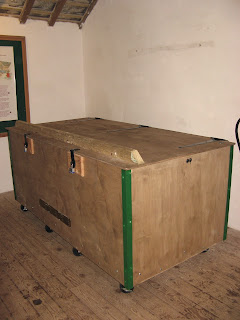It has been quite an exciting year at Acorn Bank Watermill.
There is a general movement to remove weirs, as they are an impediment to wildlife in the river. We were fortunate to have our weir Grade 2* listed, so it couldn't be removed without lots of permissions. However, it was badly undercut and eroded, and we were concerned that it might collapse in a storm.
Over the past couple of years we have been working with the National Trust's award-winning Riverlands team and eventually a scheme was developed to remove the weir and replace it with a series of cascades and pools. Instead of the river level dropping over the 4 metres of the weir, it would fall along 45 metres of rapids.There were a lot of permissions needed and a lot of finance had to be identified, all of which was done by Rebecca and the Riverlands team.In August the work was carried out. Something between 500 and 700 tonnes of rock were placed in the river and the old weir was demolished.
Relief -it works. We may even have slightly more water than before. The pictures below give some idea of the size of the task.


















